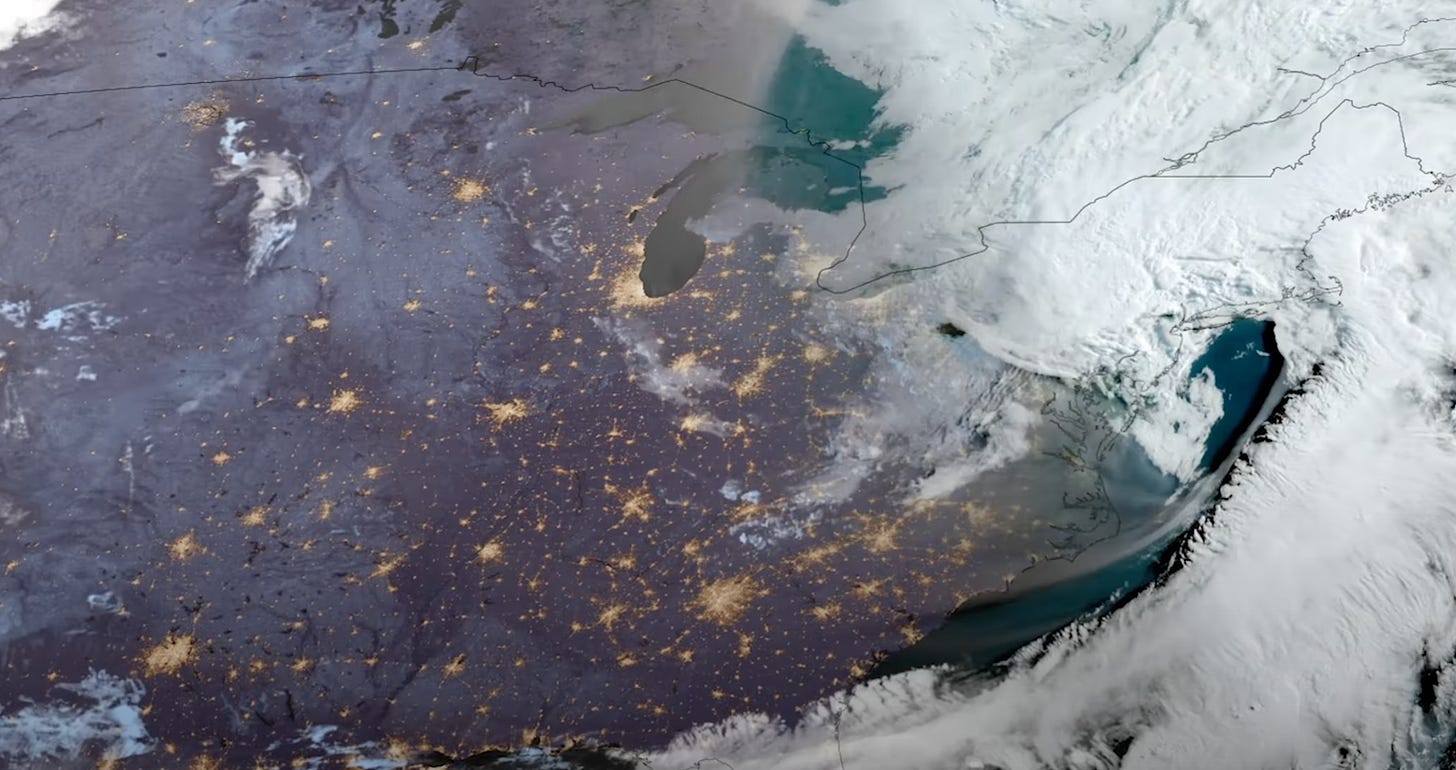How Wildfire Smoke Gets Here From Canada is Complicated (with video)
A multi-step atmospheric odyssey must unfold perfectly for the smoke from Canadian wildfires to impact Vermont's air quality.
When a hazy, orange-tinged sky blankets Vermont and the crisp mountain air is replaced by the acrid smell of smoke, it’s a powerful reminder of a connection that spans thousands of miles. The smoke from massive wildfires burning in Canada’s western boreal forests doesn’t simply drift eastward; its arrival in the Green Mountain State is the final act in a complex atmospheric drama, a chain of events where each link must hold for the impact to be felt at ground level.
The Launch: A Powerful Updraft
The journey begins with an exceptionally intense wildfire. Fueled by conditions like drought and high winds, these fires can generate immense heat, creating a powerful updraft. This initial boost, sometimes forming a fire-driven thunderstorm cloud known as a pyrocumulonimbus, is crucial. It acts like an elevator, punching the smoke high into the atmosphere, sometimes miles above the Earth's surface. Without this powerful initial lift, the smoke would likely stay close to its source, with little chance of a long-distance voyage.
The Highway in the Sky: Riding the Jet Stream
Once injected into the upper atmosphere, the smoke is at the mercy of large-scale weather patterns. The primary engine for its cross-continental journey is the jet stream, the high-altitude river of air that flows from west to east. The specific path of this meandering current is critical. For smoke to head towards the Northeast, it needs to be captured by a dip, or a "trough," in the jet stream that is positioned just right.
Often working in tandem with the jet stream are vast high-pressure systems. The clockwise circulation of air around these systems can act as a steering mechanism, guiding the plume of smoke across the continent. When these weather patterns become locked in place for days, in a phenomenon sometimes called an "Omega Block," they create a persistent highway for the smoke, leading to prolonged air quality events for regions in the path.
The Descent: Bringing the Smoke to the Surface
Even if the smoke successfully navigates the atmospheric highways to a position above Vermont, it doesn't guarantee hazy conditions on the ground. For the air quality to deteriorate, the smoke must descend from the upper atmosphere.
This downward movement, known as atmospheric subsidence, is often facilitated by the same high-pressure systems that helped steer the smoke. As air within a high-pressure system sinks, it brings the suspended smoke particles down with it.
The final, critical step often involves a temperature inversion. Typically, the air closer to the ground is warmer than the air above it. In an inversion, this is flipped, with a layer of cooler air trapped beneath warmer air. This acts like a lid, preventing the descended smoke from dispersing and concentrating it near the surface where people breathe.
A Chain of Dependencies
The entire process is a delicate cascade. A "failure" at any stage can prevent a significant air quality event in Vermont.
If the fire isn't intense enough, the smoke never reaches the upper atmosphere.
If the jet stream zigs instead of zags, the smoke may be carried out over the Atlantic or into the southern United States.
If the mechanisms for descent are absent, the smoke can pass harmlessly overhead.
If there's no temperature inversion, the smoke that does reach the surface can be quickly mixed and diluted by winds.
This conditional nature is why the presence of wildfire smoke is episodic, not constant, even during active fire seasons.
A Sign of a Changing Climate (Man Made or Not)
Experts emphasize that understanding these atmospheric connections is more important than ever. Mounting evidence suggests that climate change is contributing to more frequent and intense wildfires, increasing the amount of smoke being pumped into the atmosphere. Simultaneously, research is ongoing to determine how a changing climate might alter the very atmospheric patterns that control where that smoke goes.
The journey of smoke from a distant forest to the air we breathe is a stark illustration of how interconnected our planet's systems are. What happens in one part of the continent can, under the right conditions, have a very direct and noticeable impact thousands of miles away.
For the public, the message from health officials is simple and direct: when the smoke is here, breathe as little of it as possible. Stay indoors, use air purifiers if available, and limit strenuous outdoor activity.


